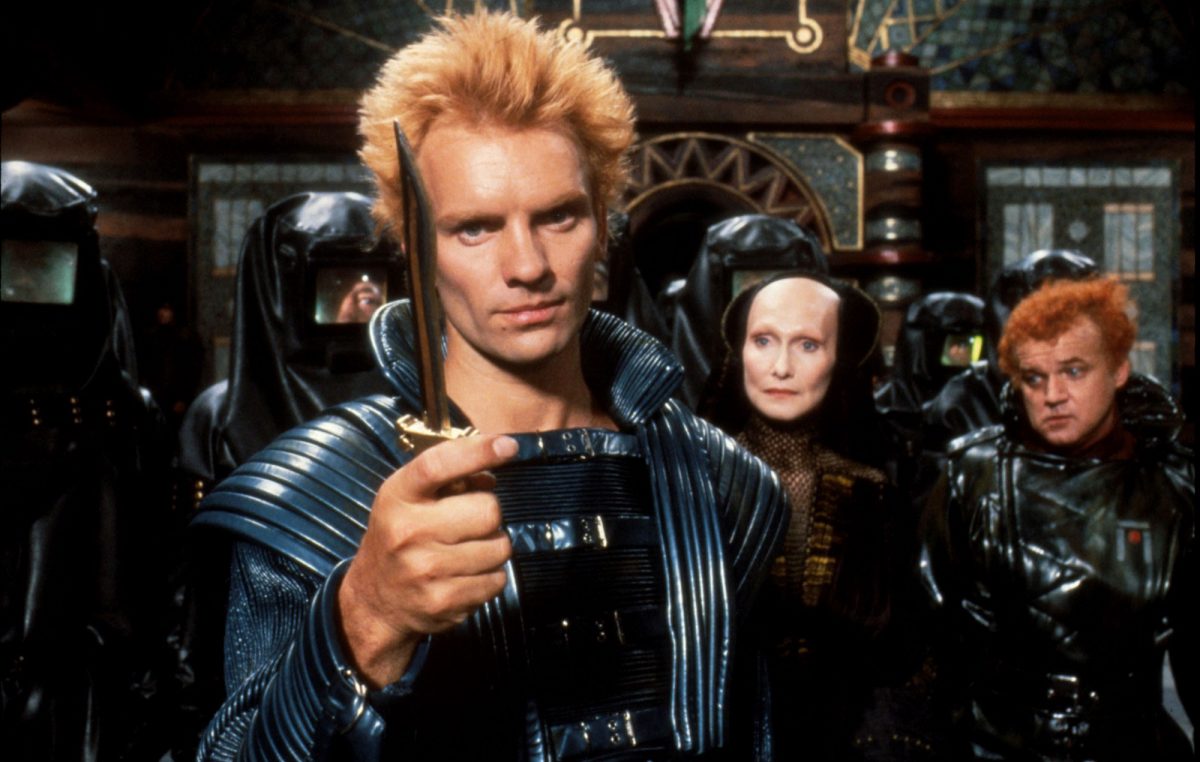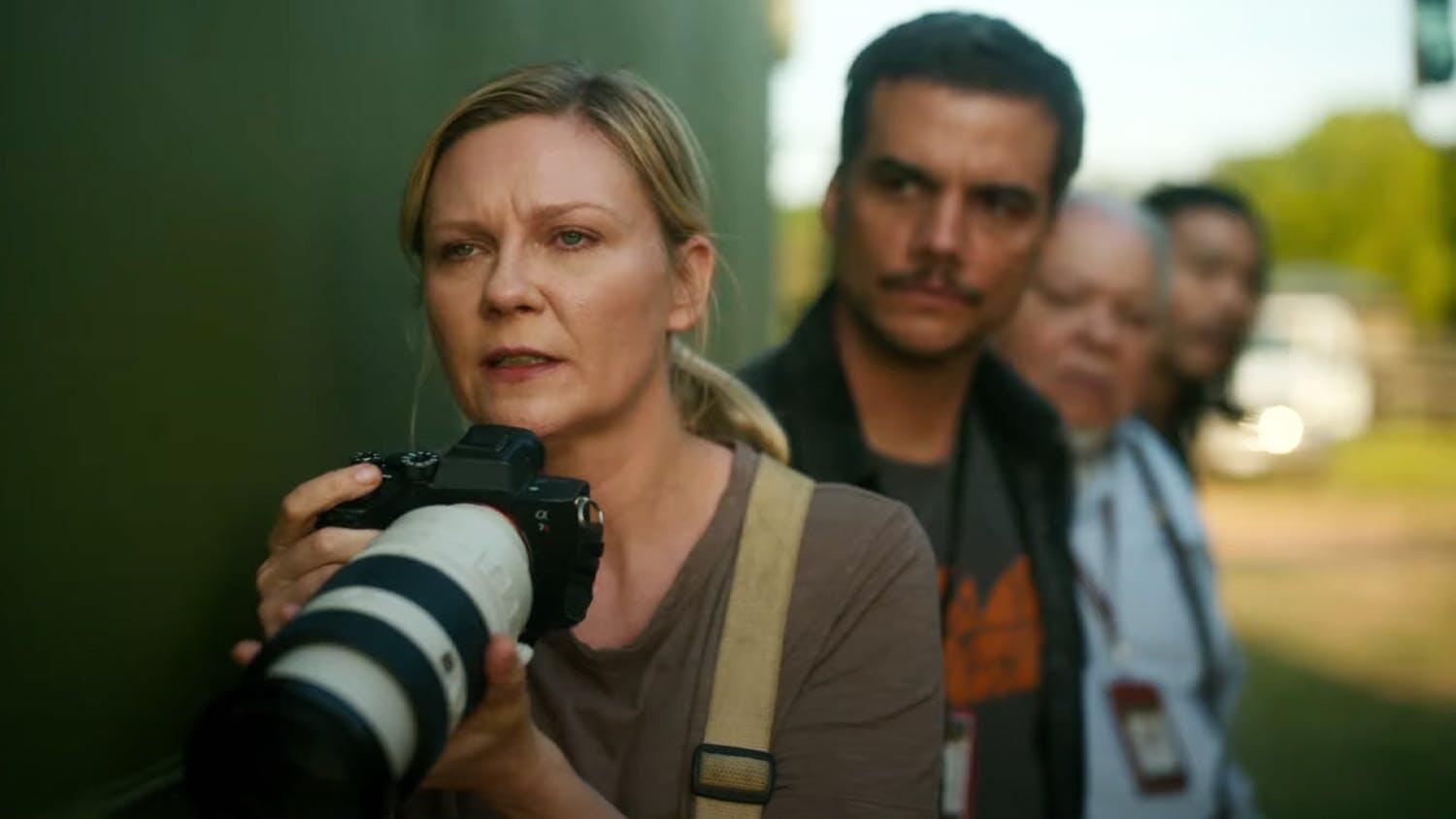In the following review, Wilmington assesses Lynch’s use of dark, obsessive, and bizarre visual imagery in Dune, noting that the film as a whole is not necessarily successful.
by Michael Wilmington
The multimillion-dollar adaptation of Frank Herbert’s bestselling science-fiction novel, Dune with its evocative and densely detailed vision of a desert planet where mammoth worms capable of swallowing whole express trains burrow through the sand, is one of the year’s most peculiar films. It’s cold, strange and remote. It’s lit in such dark tones that, watching it, we often seem to be wandering through some vast, echoing mausoleum. It unfolds at a measured, lugubrious, almost maddening pace. And Herbert’s byzantine plot is ruthlessly condensed and shoe-horned into a 140-minute running time that seems barely adequate.
Yet [Dune], opening citywide today, is also packed with sometimes spellbinding, sometimes splendiferous, always bizarre imagery. If it fails—and certainly it fails as the Star Wars-style comic-book extravaganza those only vaguely familiar with the novel may expect—it’s at least one of those memorable, spectacular failures that stick in your mind obsessively.
Dune, or Arrakis, is a planet composed almost entirely of a Sahara-like desert. It is also the arena where a charismatic teenager, ducal heir Paul Atreides, is cast out of the haven of his family’s influence and power into a hell of exile and tormented wandering. He has been plunged there by the perfidy, treachery and unbelievable sadism of the Harkonnen clan, his father’s sworn enemies (and the puppets of a vast imperial conspiracy). Herbert’s plot is essentially a revenge saga—Dumas’ The Count of Monte Cristo imagined on far more grandiloquent, planetary terms.
It’s also a tale of coming-of-age and a rumination on ecology, warfare, politics and religion. The density of Dune’s imagined universe is probably what most attracts its legion of fans, what makes it such a pop milestone (at the end of the novel there’s a map, four appendixes and a 20-page glossary of words and phrases indigenous to his special terrain).
Herbert is an ex-journalist, and it’s partially the concrete quality of Dune’s imaginative rambles that makes it such fun to read. But David Lynch, the movie’s writer-director, is a bit more of a visionary, a bit darker-hued, more obsessive. His Dune is superficially faithful to the novel, but it has an entirely different effect. Where Herbert’s writing begins to soar is when he gets his hero, Paul, into the desert, into the open spaces. Lynch is more comfortable in the shadowy confines of the various castles, where plots are hatched and dark deeds unfold. He’s always been something of a claustrophobic director—his masterpiece, Eraserhead takes place almost entirely in a bare little room, with a hero who spends much of his time staring into the radiator.
Derring-do and heroism in general seem slightly foreign to Lynch. The movie’s weakest performance is Kyle MacLachlan’s as Paul (or Muad’Dib). MacLachlan, making his movie debut, seems at times almost paralyzed by reverence. His eyes have a dead, flat look, and he rolls over his words as if they were Holy Writ.
The villains, on the other hand, have a field day. As Feyd Rautha. Paul’s heinously magnetic opposite number. Sting has all the charisma MacLachlan often lacks; Sian Phillips makes a delectably sinister Reverend Mother Gaius Helen Mohiam. And, as the arch-heavy Baron Harkonnen, Kenneth McMilan—bulbously fat. his face a rotting mass of diseased eruptions, his eyes darting with outrageous lewdness, his entire body encased in an outlandish flying suit as he commits act after act of unrestrained degeneracy and vileness—all but blows every other actor off the screen. (It’s here, in fact, that Lynch’s imagination seems most unfettered, where his black, weird, incandescent humor bubbles over.)
Dune’s cinematic trappings—the art direction, the costume design. Freddie Francis’ cinematography, the refreshingly non-cliched score by Toto and Brian Eno—are rich, occasionally splendid. But the movie has that same weird, hermetic feel that infused the cul-de-sac of Eraserhead, something slightly inappropriate to its epic intentions, something which its sporadic outbursts of crazed grandeur can’t quite erase. Perhaps it’s a spectacular case of directorial miscasting. Perhaps it was simply a huge tactical error to try to encompass the whole novel in one movie—where two, or even three, might have suited it best. Brilliant as Lynch and his collaborators often are, one has to mine out the cinematic gems and moments of wonder and awe here—like the precious water concealed below Arrakis’ sandy surface.
SOURCE: Wilmington, Michael, “Dune Is Slow Going but Apt to Stick in the Mind.” Los Angeles Times, 14 December 1984





